Let’s go back to the year 1956. Eisenhower was in the White House. “Heartbreak Hotel” topped the charts. America’s Oldest Teenager Dick Clark picked up a gig hosting “American Bandstand.” And a loaf of bread cost about 18 cents.
Here in Vancouver, it was the year that McLoughlin Middle School opened. Mac was rebuilt after it first opened in 1943 to accommodate children whose families moved to the area to work in the shipyards.
Of course the world has changed since then, as it inevitably does. But schools like Mac that were built during the ’50s, as well as those built in the ’60s and ’70s, have facilities that don’t support today’s teaching and learning needs.
Their old, leaky roofs are a problem when it rains—which of course is most of the year. Overcrowding has forced offices and classrooms into spaces like closets and portables that are inadequate in the long term. Restrooms are insufficient. And anyone who teaches in a school designed to be open concept is faced with unique challenges.
Most of these schools received only minimal improvements, or none at all, in the past 15 years. During that time, our community supported more than $400 million in enhancements for other buildings and new schools. Now it’s time for those schools that weren’t prioritized 15 years ago to have their turn.
We also have new programs of choice with facility needs. One of them, Vancouver iTech Preparatory, is housed in two different locations 10 miles apart.
To address these problems, we’re engaging the staff, students, parents and community in redesigning some of our schools most in need of upgrades. They’re taking on a tough challenge: imagining what education will look like in 50 years. Now, we don’t know exactly what the future will hold. But we can take the best of what’s worked in the past and try to anticipate the needs for the future.
The district has held several symposia as part of this process. Although every school is unique, there are a few common themes. First: community. It’s very clear that our schools want to strengthen their relationships with the people and organizations of the surrounding area.
Supporting flexibility in teaching and learning through the creation of multipurpose, adaptable spaces is another important idea.
Here’s McLoughlin Associate Principal Stoney Myers:
“Space, to really allow for the group work, the pairing, the individual work and stuff. So definitely we want to have a variety of stuff so kids can explore, some self-learning, mobility to move around.”
Other recurring themes include connections to the natural world and fostering a family environment.
These ideas have resulted in design concepts for the schools we want to rebuild or renovate. Although these are far from the final plans, it’s exciting to see new buildings begin to take shape.
This redesign process is about more than just brick and mortar. It’s about giving students a safe, welcoming place to come every day. It’s about equity and excellence for all. Every single student, regardless of zip code or socioeconomic status, deserves learning environments where they can thrive. Future-ready schools produce future-ready graduates.
About the benefits of updating facilities, Ogden students Isaiah Montgomery and Olga Orlovskaya said it best:
“If they have a great school building, they will get a good education, which will continue to lead on to a good career.”
“Right now, it’s still a good school, but later on if they make it a better school, everyone will want to go to school and they’ll want to learn more, that’s what I think.”
We want them to want to learn more. But first we have to give them a place where they can do just that.
Take care,
Pictured above, from left: McLoughlin students Courtney Dillman, Anastacia Mikaele, Luke Seeley, Allison Blaine, Nina Albrecht, Principal Travis Boeh and Sophie Albright helped redesign their school. Here, they prepare for an open house to tell people about the three concepts that resulted from their input, as well as that of staff members, parents, community members and community organizations.

